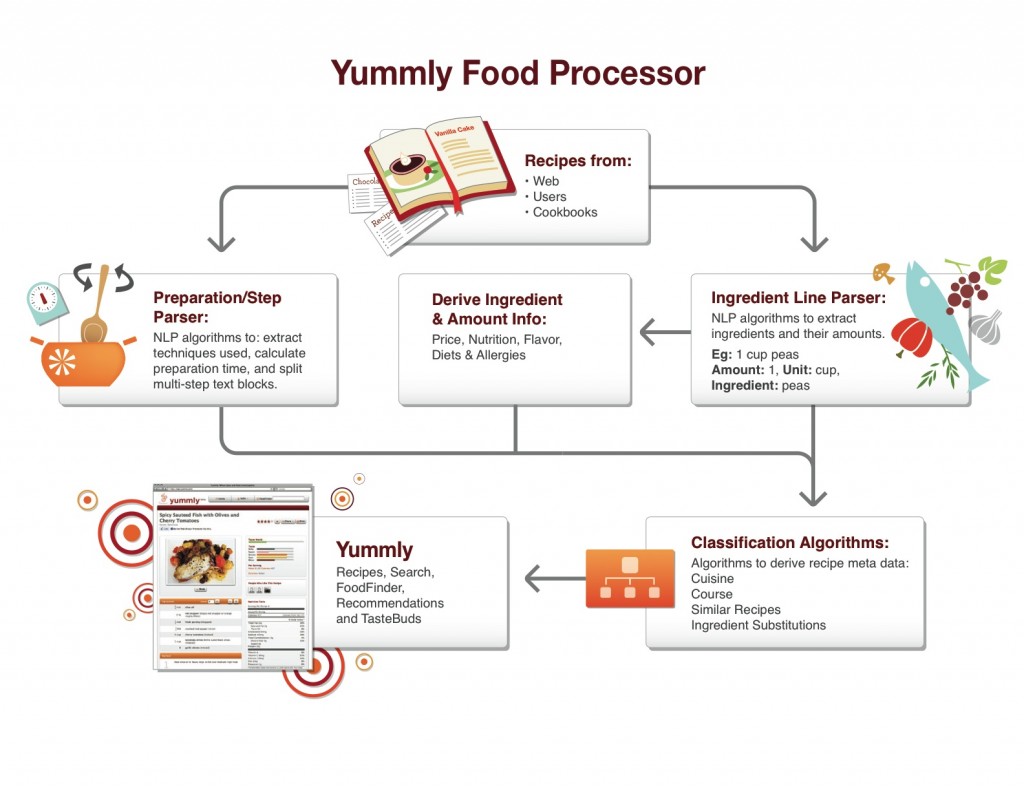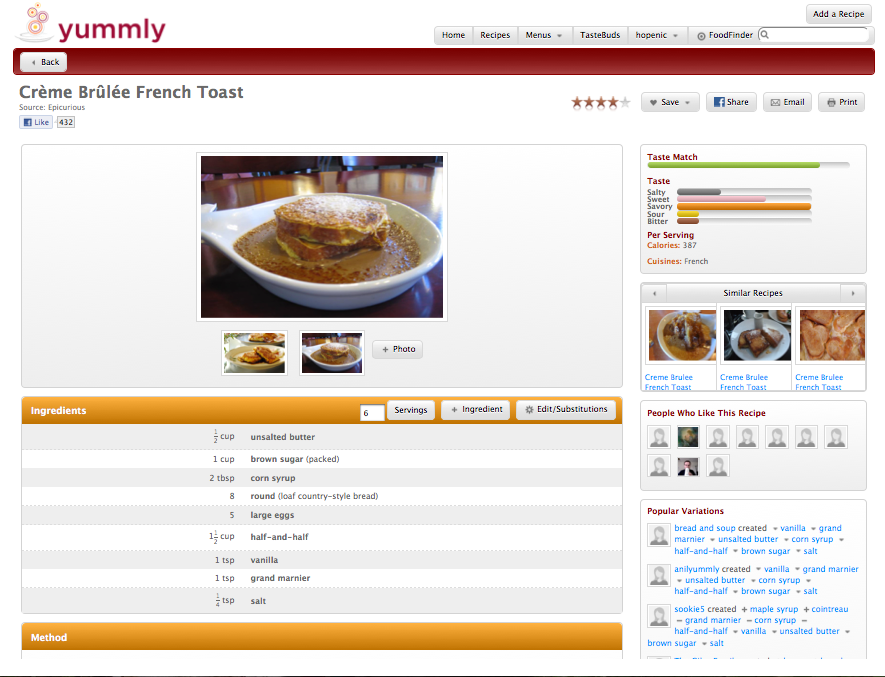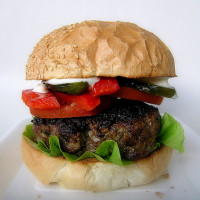Wouldn’t it be nice if you could easily and quickly find the exact recipe you want, based on your personal health profile and preferences?
Yummly CEO and Founder David Feller thinks so. Back in 2009, Feller recognized an opportunity to leverage recommendation engine technology to create a more intelligent recipe search engine, similar to Amazon and Netflix. Yummly’s recipe platform utilizes semantic search web technology to create robust search, filter, and recommendation features. While most sites allow users to search for recipes based on a particular type of food, ingredient, or course, Yummly goes one step further by enabling you to filter by nutrition, diet, allergy, price, cuisine, time, taste, and source. If you want to change the ingredients or quantity of a recipe, Yummly will adjust ingredient amounts accordingly. Recipe recommendations get “smarter” the more you use the site, another semantic feature.
While there are the obvious benefits I derive from using the site, I am particularly interested in the food ontology that Yummly is creating, which could potentially change the way we relate to food. As you can see from the graphic above, arriving at the end-user search interface requires a complex combination of aggregating recipes, using natural language processing algorithms to extract information about ingredients and techniques, using a classification algorithm to understand how ingredients, recipes, and techniques relate to one another, and user interaction. Having a standardized way of naming ingredients offers immense opportunities for improving the coordination of food information. Food enthusiasts, data geeks, and information scientists have lots of reasons to keep an eye on Yummly.
Feller was kind enough to answer a few questions about Yummly’s business model.
Danielle Gould: What is the inspiration behind Yummly?
David Feller: The idea for Yummly came from my hate of mustard and my love for cooking. I was constantly looking for new meal ideas, but there was never an easy way for me to search for recipes on the web efficiently, let alone in a way that understood what I like and don’t like and could help me limit my searches to those foods. It seemed kind of crazy to me that technology existed to help people find movies, music, shopping, etc…, but for something we do three times a day (eat) hadn’t been addressed in the same way. That was the genesis of Yummly.
DG: How does Yummly differ from other recipe sites?
DF: Yummly differs from other sites in a few different ways: First, our ability to ‘understand’ a recipe – we can look at a recipe and determine a lot of things about it: whether it’s applicable to specific diets or allergies, the nutrition, the price per serving, the taste, etc. Secondly, we bring together the best recipes from across the web in one place, where all of Yummly’s powerful features can be applied. Finally, because we ‘understand’ recipes at such granular levels, we can also provide excellent recommendations (similar to a Netflix or Pandora).
DG: What does semantic mean to you? What makes your site semantic?
DF: We take the word ‘semantic’ to mean “understanding the intent and meaning of the searcher.” An example of what makes Yummly semantic is a user searching for recipes that are ‘vegetarian’. They aren’t looking for recipes that have the word ‘vegetarian’ in them, but that’s how Google, Bing, Allrecipes, Food Network, etc will interpret it; they look for keywords. In contrast, Yummly looks for ‘things that are vegetarian’; we know what a vegetarian diet is and the foods and ingredients it consists of, so we can look for all the things that are applicable to that diet.
DG: What is your business model?
DF: Over time, we anticipate implementing a model that works for both advertisers and our users: highly targeted advertising information and promotional offers based on your individual tastes and preferences.
DG: It seems like there could be an interesting opportunity to utilize geo-location to enable people to access ingredient prices and product based on their location. Do you have any plans to incorporate geo-location in the future?
DF: We’d definitely love to do that at some point. The limitation doesn’t lie with Yummly actually – it’s the grocery stores’ ability to provide the information.
DG: Where does your data come from (including price data)?
DF: We created our food database from scratch using readily available sources of information to help augment our database, including the USDA National Nutrient Database for Standard Reference and Amazon Fresh for pricing.
DG: What kind of curation & provenance has gone into Yummly’s data?
We combine both manual and automated processes to curate our data, although, some of the most valuable information comes from our users. They can flag any recipe that needs to be reviewed so we can look at it and make improvements.
DG: How many terms or ingredients are in your database?
DF: There are over 18,000 ingredients in our database and we are adding more every day.
DG: What opportunities do you think semantic web technology creates for food?
DF: There are a number of ways semantic applications could go in the future. We are really just beginning to see applications of semantic food technology. You might see it tied to grocery shopping, restaurants, fitness and health.







